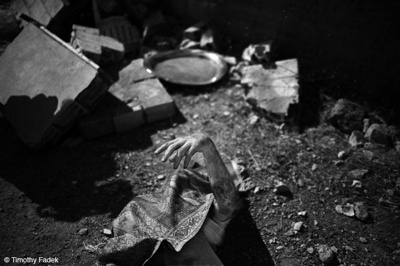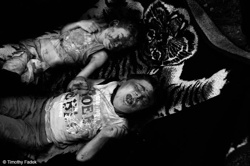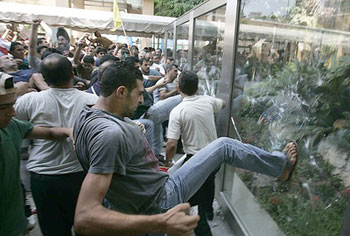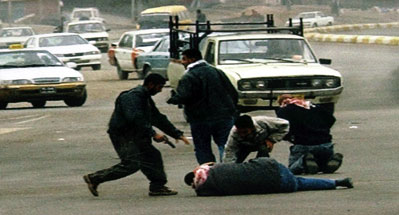Notes
Qana Was Not Staged
With the firestorm coming from the Rathergate crowd, and doubts now spreading from the left wing about images from Lebanon, it can start to feel like all reason is being subsumed by political hysteria. At the same time, war photojournalism seems at risk of being tarred with one brush.
I spent about a half-hour on the phone this evening with photojournalist and contributer Tim Fadek, who has been in Lebanon for about three weeks covering the war.
Having been present following the Qana air strike, Tim emphasized that there was no parading or manipulation of bodies, and that the scene was not staged in any way. That said, Tim took pains to explain how this kind of situation carries with it certain cultural practices and emotional responses that don’t transfer well to the West. This seems especially true right now, in the super-heated and intensely polarized political environment in the U.S.
"When there is senseless death in this part of the world," Tim explains, "it is completely normal to display the bodies. Whether in plastic or on blankets, it’s done whether there are photographers there or not. The idea is to ready the public for what has happened, and also say, look what our enemies have done to us."
Regarding the images cited as evidence of manipulation, Fadek said: "a finer distinction is being lost in the West. In Qana, rescue workers did not hold up a baby to set up a shot. They were not displaying them to the media, per se. Yes, it was not lost on these men that the cameras presented a window to the world. But these people were doing wrenching rescue work and they are human beings. These instances [of holding up babies] were mostly spontaneous and momentary expressions of anger."
Tim also explained the circumstances surrounding his own images. Although he felt the photo above was more powerful shown this way, he explained that a rescue worker did set down the body, briefly uncovering it for photographers to document.
For those inclined to consider the depictions as manipulated, Fadek also offers the following image, along with the circumstances involved.
Once removed from the collapsed building, these bodies were set on the ground to be taken down a hill. From this spot to the waiting ambulances was at least a four minute walk. In this case, the two children were placed on this blanket where photographers had 1 1/2 to to 2 seconds to document them. Given the distance and the available manpower, the two bodies were placed on the same blanket to save effort.
In each case, Tim’s understanding was that the rescuers were acting in a manner reflecting a normal attitude toward the dead. "It’s not a manipulation, it’s a cultural distinction," said Fadek. "It’s the same as at a martyrs funeral, where faces are exposed, and the bodies marched through the streets. It’s been done for years, media or otherwise."
—————–
Update from Tim Fadek (7:35 am PST):
"I need to explain the two or three seconds where the rescue worker uncovered the face of the dead man with his rigormortised hand in the air. The rescue worker pulled back the blanket and screamed in English: "Look at this! Israel, America!!" Then he re-covered the face. Given Middle Eastern norms and his clear anger, I could not consider this display disrespectful.
Also, in no way do I consider his actions "directing" the press, or altering the setting. It was he who pulled the body from the rubble and placed the blanket on the victim in the first place. He was simply expressing his feelings about the senselessness. Of course, I photographed the situation with and without the blanket covering the corpse. I just preferred the covered version and that is what I sent to my agency and posted on my website."
—————–
Update 2 (9:23 am PST):
You can view one more image Tim took from Qana, as well as a thoughtful, explanatory statement about "photo direction" by photographer Thorne Anderson, at this companion piece I just posted at Huffington.
(image: Tim Fadek/Polaris. July 30, 2006. Qana, Lebanon. Used by permission. Please seek permission before republication.)




Reactions
Comments Powered by Disqus